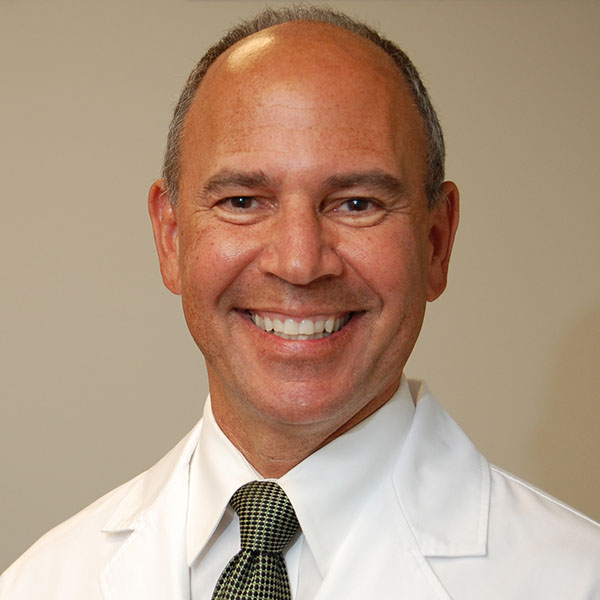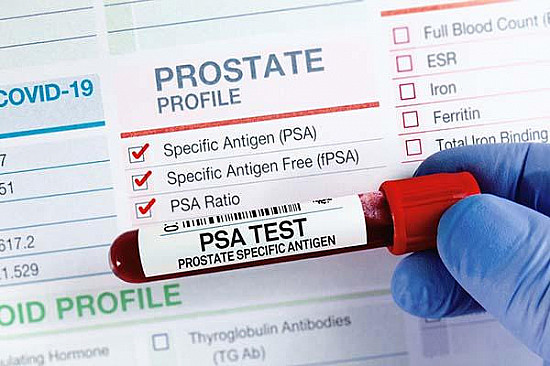Taking charge of prostate cancer
What you should do when following active surveillance.
- Reviewed by Howard E. LeWine, MD, Chief Medical Editor, Harvard Health Publishing; Editorial Advisory Board Member, Harvard Health Publishing

More men with low-risk prostate cancer choose active surveillance over immediate treatment with radiation, hormonal therapy, or surgery. With active surveillance, men monitor their cancer and don’t seek treatment unless it becomes worse.
"Active surveillance can help men analyze their situation before deciding to have invasive procedures and treatments, which can lead to side effects that can affect quality of life and may not improve life expectancy," says Dr. Frank McGovern, a urologist with Harvard-affiliated Massachusetts General Hospital. "But it is also an opportunity for men to re-evaluate their lifestyle and make changes that may improve their cancer prognosis and ensure their life is the healthiest it can be."
Going by the numbers
Generally, active surveillance is an option for men with low-grade cancer (cancer confined to the prostate gland and less likely to spread), meaning those with prostate-specific antigen (PSA) levels of less than 10 nanograms per milliliter (ng/ml) and a Gleason score of 6 or less. High-grade and many intermediate-grade prostate cancers don’t qualify for active surveillance, and treatment for them usually begins immediately.
Another group who are not good candidates for active surveillance are men with a family history of lethal prostate cancer and those with a BRCA gene mutation, especially BRCA2, which is linked with a higher risk for prostate cancer.
A blood test measures PSA, a protein produced by both cancerous and noncancerous tissue in the prostate. The Gleason system involves ranking the two most common types of cancer cells in a man’s biopsied tissue on a 5-point scale. The two rankings are added together to get a Gleason score, with 10 being the highest. The higher the number, the greater the chance the cancer will quickly grow and spread.
Men on active surveillance get a periodic PSA test and digital rectal exam in which the doctor feels for abnormal areas on the prostate. These are usually scheduled every six months.
A repeat biopsy is done one year after the initial diagnosis and then three years after that. Further biopsies are done at the guidance of the patient and his doctor. Your doctor may also order a prostate MRI during the monitoring phase.
"In general, the higher a man’s PSA level, the greater likelihood he has prostate cancer," says Dr. McGovern. "Also, a significant rise in PSA levels over the course of a year may be a sign of cancer."
If PSA levels rise or if a new or enlarging growth is detected during the rectal exam, your doctor will likely recommend a prostate biopsy sooner than normal protocol to check whether the cancer has become more aggressive.
"If the biopsy doesn’t show concerning changes, you and your doctor may decide to continue with active surveillance, but if it does, or you have an increase in prostate volume or a higher Gleason score, your doctor may suggest moving forward with surgery, radiation, or hormonal therapy," says Dr. McGovern.
Steps of action
Like any medical procedure, active surveillance has its risks. "The most serious of these is underestimating the cancer’s growth until it becomes life-threatening, although this occurs in a small percentage of men," says Dr. McGovern.
Another drawback is psychological — the constant worry, stress, and anxiety that the cancer can worsen because you are not seeking treatment. One way to alleviate these feelings is to embrace a take-charge attitude about your health.
"Instead of waiting to see if their prostate cancer worsens, men can take steps to improve their cancer situation and even protect themselves from other health issues, like heart attacks and strokes," says Dr. McGovern. "This can empower men and give them a better sense of control over their condition."
He offers these suggestions:
Increase exercise intensity. A study published Aug. 19, 2021, in JAMA Oncology found that men on active surveillance lowered their PSA levels and cancer cell growth after doing 30 minutes of high-intensity interval training (HIIT) on a treadmill three times a week for 12 weeks. In HIIT, you alternate between periods of intense aerobic output and rest. In this study, the men repeated a pattern of two minutes of HIIT followed by two minutes of recovery.
Other research has found that men with prostate cancer who engaged most frequently in vigorous activity had a 30% lower risk of developing advanced cancer and a 25% lower risk of developing lethal cancer when compared with men who exercised the least. Examples of vigorous activities include running, cycling, swimming, and racquet sports. (Make sure to check with your doctor before embarking on any kind of exercise program.)
Watch your cholesterol. Studies have found that men who take cholesterol-lowering statins may have a lower risk of advanced prostate cancer. Statin use has also been associated with longer survival among men with prostate cancer. "Get your cholesterol levels checked, and if they are high, consult your doctor about whether to take statins," says Dr. McGovern.
Manage your weight. Weight gain is linked with more aggressive cancer. "Even losing five to 10 extra pounds can help lower your risk," says Dr. McGovern. A healthier weight also keeps blood pressure and cholesterol levels under control.
Eat a plant-based diet. Although it’s unclear whether specific dietary habits can influence prostate cancer growth, Dr. McGovern has found his patients do much better when they follow a plant-based diet like the Mediterranean or MIND diet. He recommends consulting a nutritionist who can offer guidance on meal planning.
Consider therapy. Your anxiety about active surveillance may be associated with something else. "A therapist can help you explore where your anxiety lies and what may be driving it," says Dr. McGovern. "Addressing any issues can help relieve your uncertainty or hesitation about active surveillance."
Image: © skynesher/Getty Images
About the Author

Matthew Solan, Executive Editor, Harvard Men's Health Watch
About the Reviewer

Howard E. LeWine, MD, Chief Medical Editor, Harvard Health Publishing; Editorial Advisory Board Member, Harvard Health Publishing
Disclaimer:
As a service to our readers, Harvard Health Publishing provides access to our library of archived content. Please note the date of last review or update on all articles.
No content on this site, regardless of date, should ever be used as a substitute for direct medical advice from your doctor or other qualified clinician.
















